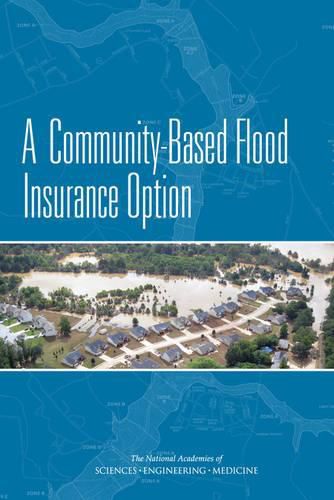Readings Newsletter
Become a Readings Member to make your shopping experience even easier.
Sign in or sign up for free!
You’re not far away from qualifying for FREE standard shipping within Australia
You’ve qualified for FREE standard shipping within Australia
The cart is loading…






River and coastal floods are among the nation’s most costly natural disasters. One component in the nation’s approach to managing flood risk is availability of flood insurance policies, which are offered on an individual basis primarily through the National Flood Insurance Program (NFIP). Established in 1968, the NFIP is overseen by the Federal Emergency Management Agency (FEMA) and there are about 5.4 million individual policies in the NFIP. The program has experienced a mixture of successes and persistent challenges. Successes include a large number of policy holders, the insurance of approximately $1.3 trillion of property, and the fact that the large majority of policy holders - 80% - pay rates that are risk based. NFIP challenges include large program debt, relatively low rates of purchase in many flood-prone areas, a host of issues regarding affordability of premiums, ensuring that premiums collected cover payouts and administrative fees, and a large number of properties that experience severe repetitive flood losses.
At the request of FEMA, A Community-Based Flood Insurance Option identifies a range of key issues and questions that would merit consideration and further analysis as part of a community-based flood insurance program. As the report describes, the community-based option certainly offers potential benefits, such as the prospect of providing coverage for all (or nearly all) at-risk residents and properties in flood-prone communities. At the same time, many current challenges facing the NFIP may not necessarily be resolved by a community-based approach. This report discusses these and other prominent issues to be considered and further assessed.
$9.00 standard shipping within Australia
FREE standard shipping within Australia for orders over $100.00
Express & International shipping calculated at checkout
Stock availability can be subject to change without notice. We recommend calling the shop or contacting our online team to check availability of low stock items. Please see our Shopping Online page for more details.
River and coastal floods are among the nation’s most costly natural disasters. One component in the nation’s approach to managing flood risk is availability of flood insurance policies, which are offered on an individual basis primarily through the National Flood Insurance Program (NFIP). Established in 1968, the NFIP is overseen by the Federal Emergency Management Agency (FEMA) and there are about 5.4 million individual policies in the NFIP. The program has experienced a mixture of successes and persistent challenges. Successes include a large number of policy holders, the insurance of approximately $1.3 trillion of property, and the fact that the large majority of policy holders - 80% - pay rates that are risk based. NFIP challenges include large program debt, relatively low rates of purchase in many flood-prone areas, a host of issues regarding affordability of premiums, ensuring that premiums collected cover payouts and administrative fees, and a large number of properties that experience severe repetitive flood losses.
At the request of FEMA, A Community-Based Flood Insurance Option identifies a range of key issues and questions that would merit consideration and further analysis as part of a community-based flood insurance program. As the report describes, the community-based option certainly offers potential benefits, such as the prospect of providing coverage for all (or nearly all) at-risk residents and properties in flood-prone communities. At the same time, many current challenges facing the NFIP may not necessarily be resolved by a community-based approach. This report discusses these and other prominent issues to be considered and further assessed.